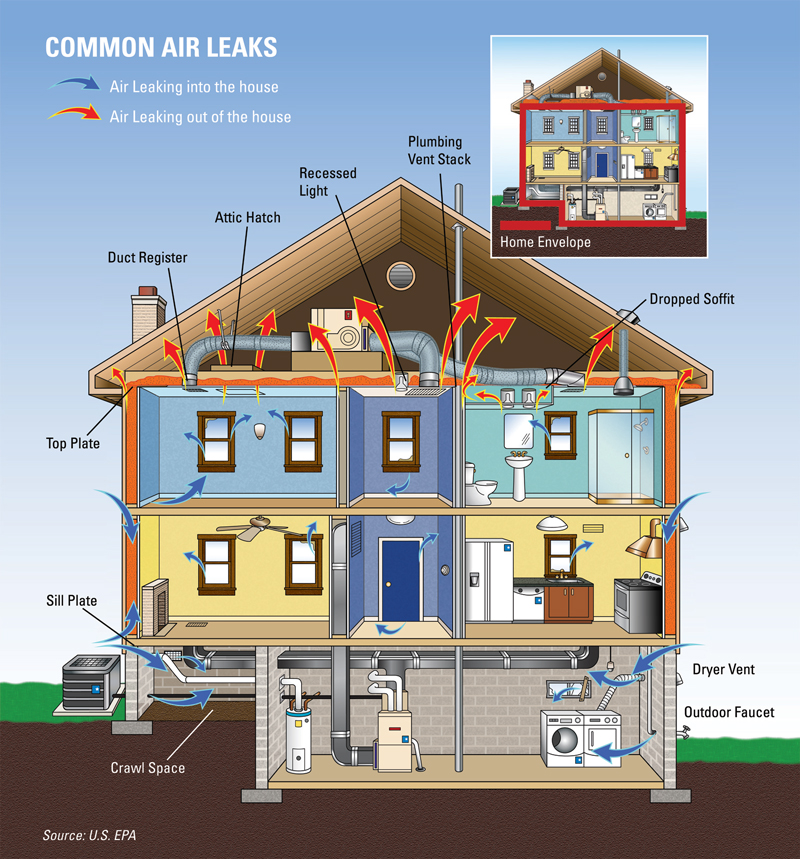Existing Home Energy Efficient Tip #2 - Add Insulation

When correctly installed with air sealing, each type of insulation can deliver comfort and lower energy bills during the hottest and coldest times of the year.
Insulation performance is measured by R-value — its ability to resist heat flow. Higher R-values mean more insulating power. Different R-values are recommended for walls, attics, basements and crawlspaces, depending on your area of the country. Insulation works best when air is not moving through or around it. So it is very important to seal air leaks before installing insulation to ensure that you get the best performance from the insulation.
To get the biggest savings, the easiest place to add insulation is usually in the attic. A quick way to see if you need more insulation is to look across your uncovered attic floor. If your insulation is level with or below the attic floor joists, you probably need to add more insulation. The recommended insulation level for most attics is R-38 (or about 12–15 inches, depending on the insulation type). In the coldest climates, insulating up to R-49 is recommended.
Building new and thinking this information doesn't apply? Well good news, it does! Insulation is just as important when building new. The greatest thing about building new is you can start with the right foundation. We recommend using an ICF (Insulated Concrete Forms) foundation because the number one source of energy loss in your home is through the basement. Which is why starting with the correct foundation is one the most important decisions you can make when building a new home. To learn more about ICF foundation and walls read our first blog post.
Don't just stop at the foundation! You can use ICF's all the way to the trusses to provide even more insulation and energy efficiency. Don't want to spend the extra money on a full ICF home? Then use a higher R-Value of insulation of at least R-23. This combined with an ICF foundation will create an energy efficient home sealing the "envelope" or "shell" of your home — its outer walls, ceiling, windows, doors, and floors. This often the most cost effective way to improve energy efficiency and comfort. ENERGY STAR estimates that a knowledgeable homeowner or skilled contractor can save up to 20% on heating and cooling costs (or up to 10% on their total annual energy bill) by sealing and insulating.
Sources of Information: www.energystar.gov
www.CharisHomes.com
No comments:
Post a Comment